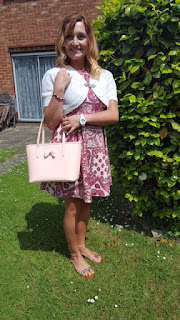The Victoria and Albert Museum (often abbreviated as the V&A), London, is the world's largest museum of decorative arts and design, housing a permanent collection of over 4.5 million objects. It was founded in 1852 and named after Queen Victoria and Prince Albert. The V&A is located in the Brompton district of the Royal Borough of Kensington and Chelsea, in an area that has become known as "Albertopolis" because of its association with Prince Albert, the Albert Memorial and the major cultural institutions with which he was associated. These include the Natural History Museum, the Science Museum and the Royal Albert Hall. The museum is a non-departmental public body sponsored by the Department for Culture, Media and Sport. Like other national British museums, entrance to the museum has been free since 2001.
The V&A covers 12.5 acres (5.1 ha) and 145 galleries. Its collection spans 5,000 years of art, from ancient times to the present day, from the cultures of Europe, North America, Asia and North Africa. The holdings of ceramics, glass, textiles, costumes, silver, ironwork, jewellery, furniture, medieval objects, sculpture, prints and printmaking, drawings and photographs are among the largest and most comprehensive in the world. The museum owns the world's largest collection of post-classical sculpture, with the holdings of Italian Renaissance items being the largest outside Italy. The departments of Asia include art from South Asia, China, Japan, Korea and the Islamic world. The East Asian collections are among the best in Europe, with particular strengths in ceramics and metalwork, while the Islamic collection is amongst the largest in the Western world. Overall, it is one of the largest museums in the world.
Since 2001, the museum has embarked on a major £150m renovation programme, which has seen a major overhaul of the departments, including the introduction of newer galleries, gardens, shops and visitor facilities.
New 17th- and 18th-century European galleries were opened on 9 December 2015. These restored the original Aston Webb interiors and will host the European collections 1600–1815.
Our trip to the above museum was filled with lovely photos. I was wearing boho chic paisley geometric top and green transparent bag from italian label Marni and swedish H&M collaboration from 2012 which nicely cooperate with Ted Baker peplum olive coat. It was a cold day.
The quirky Marni brand itself is more niche, more chic, than Versace. With its often voluminous cuts - cocoon or egg shapes, skirts cut from swathes of rich fabric, bold spotty poplin - its target audience tends away from the teens to the style-assured fashion follower in the know.
Given that this was a youthful High Street brand though, this collection though had been tailored to suit a younger market. Cuts were slimmer than the main Marni line, and many of the colours were bolder and more vivacious.
I buy a piece of Marni every year - I have a special budget for it but this H&M offer is much cheaper and remind similar quality and design what mainline do.
Youthful: Colours were brighter than the regular mainline Marni collection, while fabrics - silk and cotton - were excellent.
Castiglioni, who has always been the label's chief designer, is responsible for Marni's aesthetic of "European-inflected bohemianism." Other descriptors that have been applied to Marni designs include "quirky," "feminine," "off-beat," and "funky."Early design features included idiosyncratic prints and vintage-inspired shapes and fabrics; Marni has retained these elements but has become more streamlined. Other Marni hallmarks include juxtapositions of texture; colour blocking; a palette focused on grey, beige, and blue, in which bright colours are interspersed; and unusual shapes, such as bell hemlines, gathering, asymmetry, and large volumes.







































































